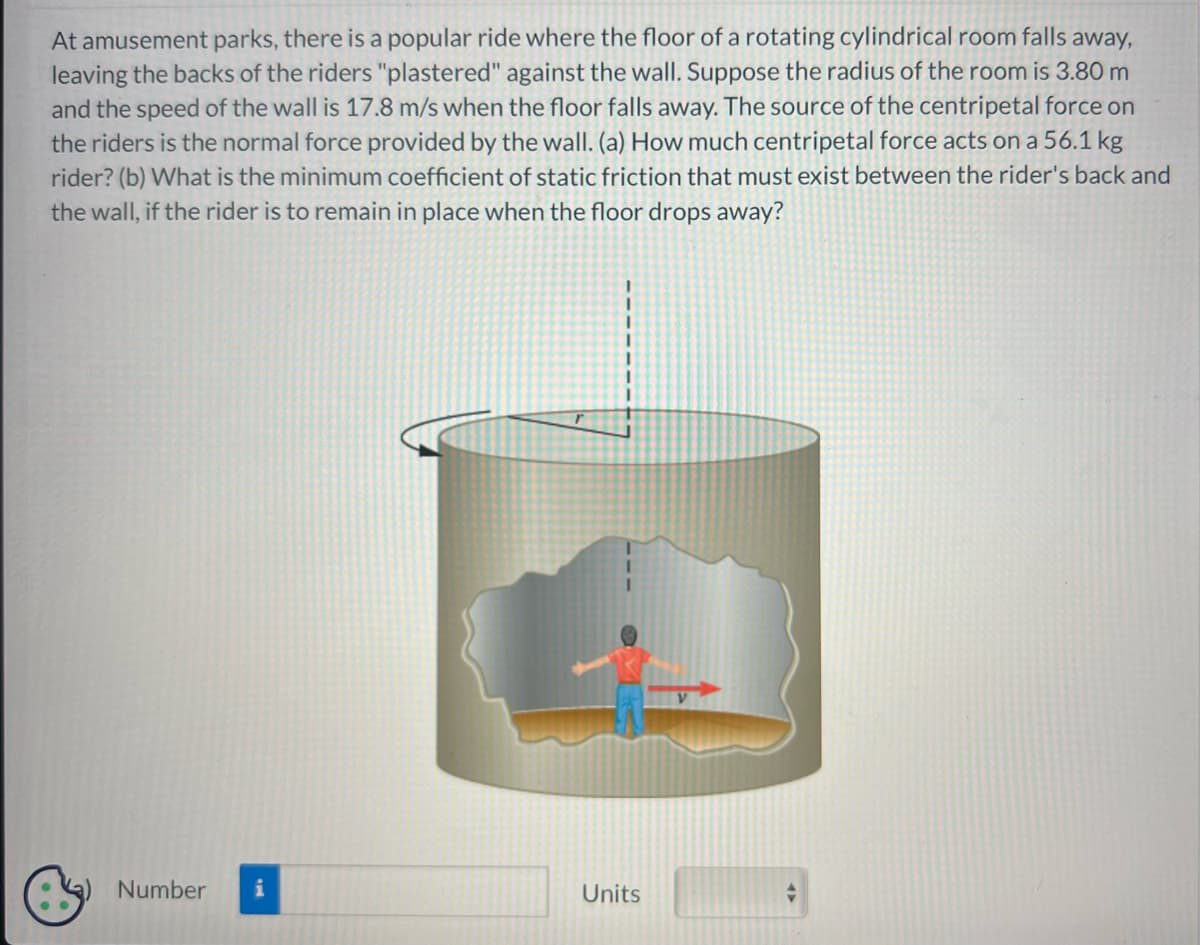At amusement parks, there is a popular ride where the floor of a rotating cylindrical room falls away, leaving the backs of the riders "plastered" against the wall. Suppose the radius of the room is 3.80 m and the speed of the wall is 17.8 m/s when the floor falls away. The source of the centripetal force on the riders is the normal force provided by the wall. (a) How much centripetal force acts on a 56.1 kg rider? (b) What is the minimum coefficient of static friction that must exist between the rider's back and the wall, if the rider is to remain in place when the floor drops away?
At amusement parks, there is a popular ride where the floor of a rotating cylindrical room falls away, leaving the backs of the riders "plastered" against the wall. Suppose the radius of the room is 3.80 m and the speed of the wall is 17.8 m/s when the floor falls away. The source of the centripetal force on the riders is the normal force provided by the wall. (a) How much centripetal force acts on a 56.1 kg rider? (b) What is the minimum coefficient of static friction that must exist between the rider's back and the wall, if the rider is to remain in place when the floor drops away?
Related questions
Question

Transcribed Image Text:At amusement parks, there is a popular ride where the floor of a rotating cylindrical room falls away,
leaving the backs of the riders "plastered" against the wall. Suppose the radius of the room is 3.80 m
and the speed of the wall is 17.8 m/s when the floor falls away. The source of the centripetal force on
the riders is the normal force provided by the wall. (a) How much centripetal force acts on a 56.1 kg
rider? (b) What is the minimum coefficient of static friction that must exist between the rider's back and
the wall, if the rider is to remain in place when the floor drops away?
Number i
Units
47
Expert Solution
This question has been solved!
Explore an expertly crafted, step-by-step solution for a thorough understanding of key concepts.
Step by step
Solved in 2 steps with 3 images
